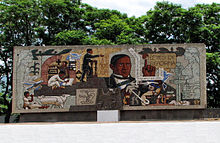
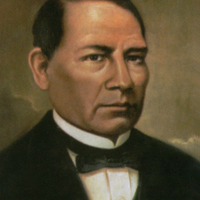 Mexico Celebrates the birthday of Benito Juárez
Mexico Celebrates the birthday of Benito Juárez
March 21st was a national holiday, the birthday of Benito Juárez. Here in Cozumel, schools were closed on Monday, March 16 since the 21st fell on a Saturday this year. I took the opportunity to look up his bio and share it with my readers. This man’s history is fascinating! I guarantee that you will enjoy reading about his life. Taken mostly from Wikipedia, the free encyclopedia, here is his fascinating biography:
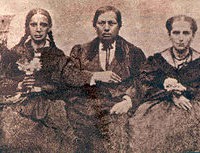
Early life
Benito Juárez was born on 21 March 1806 in a small adobe house in the village of San Pablo Guelatao, Oaxaca, located in the mountain range now known as the “Sierra Juárez”. His parents, Brigida Garcia and Marcelino Juarez, were peasants who both died of complications of diabetes when he was three years old. Shortly after, his grandparents died as well, and his uncle raised him. He described his parents as “indios de la raza primitiva del país,” that is, “Indians of the original race of the country.” He worked in the cornfields and as a shepherd until the age of 12, when he walked to the city of Oaxaca de Juárez to attend school. At the time, he could only speak Zapotec.
In the city, where his sister worked as a cook, he took a job as a domestic servant for Antonio Maza. A lay Franciscan named Antonio Salanueva, was impressed with young Benito’s intelligence and thirst for learning, and arranged for his placement at the city’s seminary. In 1843, Benito married Margarita Maza. Benito was 37 and Margarita was 17. With a height of 1.37 m (4 ft 6 in), Juárez is considered one of the shortest presidents in world history
Political Career
Juárez became a lawyer in 1834 and a judge in 1841. He was Governor of the state of Oaxaca from 1847 to 1852; in 1853, he went into exile because of his objections to the corrupt military dictatorship of Antonio López de Santa Anna. He spent his exile in New Orleans, Louisiana, working in a cigar factory. In 1854 he helped draft the Plan of Ayutla, a document calling for Santa Anna’s deposition and a convention to implement a new constitution.
Faced with growing discontent, Santa Anna resigned in 1855 and Juárez returned to Mexico. The winning party, the liberales (Liberals) formed a provisional government under General Juan Álvarez, inaugurating the period known as La Reforma. The Reform laws sponsored by the Puro (pure) wing of the Liberal Party curtailed the power of the Catholic Church and the military, while trying to create a modern civil society and capitalist economy based on the model of the United States. The Ley Juárez (Juárez Law) of 1855 declared all citizens equal before the law and severely restricted the privileges of the Catholic Church. Juárez was a Free Mason and founded the Rito Nacional Mexicano lodge in which he held the symbolic name of Guillermo Tell.
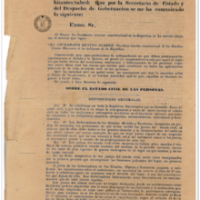
Supreme Court
A new liberal constitution, the Constitution of 1857, was promulgated, under which Juárez became President of the Supreme Court of Justice, under moderado (moderate) President Ignacio Comonfort. Conservatives led by General Félix María Zuloaga, with the backing of the military and the clergy, launched a revolt under the Plan of Tacubaya on 17 December 1857. Comonfort sought to placate the rebels by appointing several conservatives to the Cabinet, dissolving the Congress, and implementing most of the Tacubaya Plan. Juárez, Ignacio Olvera, and many other deputies and ministers were arrested. These actions did not go far enough for the rebels and on 11 January 1858 Zuloaga demanded Comonfort’s resignation.
Comonfort then re-established the Congress, liberated all prisoners and then resigned as President. The conservative forces proclaimed Zuloaga as President on 21 January. Meanwhile, under the terms of the 1857 Constitution, the President of the Supreme Court of Justice became interim President of Mexico until a new election could be held. Juárez was thus acknowledged as President by liberals on 15 January 1858 and assumed leadership of the Liberal side of the civil war known as the Reform War (Guerra de Reforma).
As Zuloaga’s troops were in control of Mexico City, Juárez and his government fled, first to Querétaro and later to Veracruz, whose customs revenues were used to fund the government’s expenditures. In 1859, during the war, Juárez ordered the confiscation of Church properties. The Conservatives were supported by the Catholic Church) and the regular army, but the Liberals had the support of several state governments in the north and central-west, as well as the administration of U.S. President James Buchanan. A treaty between the two governments, the McLane-Ocampo Treaty, was signed in December 1859, although Buchanan was unable to secure ratification of the treaty by the US Congress. Nevertheless, the aid received enabled the liberals to overcome the conservatives’ initial military advantage; Juárez’s government successfully defended Veracruz from assault twice during 1860 and recaptured Mexico City on 1 January 1861.
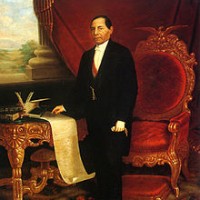 President
President
In March 1861, Juárez was finally elected President in his own right under the Constitution of 1857. However, the Liberals’ celebrations of 1861 were short-lived. The war had severely damaged Mexico’s infrastructure and crippled its economy. While the Conservatives had been defeated, they would not disappear and the Juárez government had to respond to pressures from these factions. One of these concessions was amnesty to captured Conservative guerrillas who were still resisting the Juárez government, even though these same guerrillas were executing captured Liberals, which included Melchor Ocampo. In view of the government’s desperate financial straits, Juárez cancelled repayments of interest on foreign loans.
Spain, Britain and France, angry over unpaid Mexican debts, sent a joint expeditionary force that seized the Veracruz customs house in December 1861. Spain and Britain soon withdrew after realizing that the French Emperor Napoleon III intended to overthrow the Juárez government and establish a Second Mexican Empire with the support of the remnants of the Conservative side in the Reform War. Thus began the French intervention in Mexico in 1862. Mexican forces under Ignacio Zaragoza won an initial victory over the French at the Battle of Puebla in 1862, celebrated annually as Cinco de Mayo (5 May).
The French advanced again in 1863, forcing Juárez and his elected government to flee Mexico City once again, first to San Luis Potosí, then to the arid northern city of El Paso del Norte, present day Ciudad Juárez, Chihuahua, and finally to the capital of the state, Chihuahua City, where he set up his cabinet and government-in-exile. There he would remain for the next two and a half years.
Meanwhile Maximilian von Habsburg, a younger brother of the Emperor of Austria, was proclaimed Emperor Maximilian I of Mexico on 20 April 1864 with the backing of Napoleon III and a group of Mexican conservatives. Before Juárez fled, Congress granted him an emergency extension of his presidency, which would go into effect in 1865, when his term expired, and last until 1867, when the last of Maximilian’s forces were defeated.

Expelling the French
In response to the French invasion and the elevation of Maximilian, Juárez sent General Plácido Vega y Daza to the U.S. state of California to gather Mexican American sympathy for Mexico’s plight. Maximilian offered Juárez amnesty, and later the post of prime minister, but Juárez refused to accept either a government “imposed by foreigners” or a monarchy. The government of the United States was sympathetic to Juárez, refusing to recognize Maximilian, and opposed the French invasion as a violation of the Monroe Doctrine, but was distracted by the American Civil War. Following the end of the war, US President Andrew Johnson demanded the French evacuate Mexico and imposed a naval blockade in February 1866.
When Johnson could get no support in Congress, he supposedly had the Army “lose” some supplies (including rifles) “near” (across) the border with Mexico.[10]
Faced with US opposition and a growing threat from Prussia, French troops began pulling out of Mexico in late 1866. Maximilian’s liberal views cost him support from Mexican conservatives as well. In 1867 the last of the Emperor’s forces were defeated and Maximilian was sentenced to death by military court retaliation for Maximilian’s earlier orders for the execution of republican soldiers). Despite national and international pleas for amnesty, Juárez refused to commute the sentence, and Maximilian was executed by firing squad on 19 June 1867 at Cerro de las Campanas in Querétaro. His body was returned to Europe for burial. His last words had been ‘¡Viva México!’
Juárez was controversially re-elected President in 1867 and 1871, using the office of the presidency to ensure electoral success and suppressing revolts by opponents such as Porfirio Díaz. Benito Juárez died of a heart attack on 18 July 1872 while reading a newspaper at his desk in the National Palace in Mexico City. He was succeeded by Sebastián Lerdo de Tejada, his foreign minister.
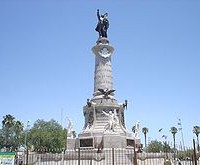
Legacy
Today Benito Juárez is remembered as being a progressive reformer dedicated to democracy, equal rights for his nation’s indigenous peoples, his antipathy toward organized religion, especially the Catholic Church (motivated by his adherence to Freemasonry), and what he regarded as defense of national sovereignty. The period of his leadership is known in Mexican history as La Reforma del Norte (The Reform of the North). He constituted a liberal political and social revolution with major institutional consequences the expropriation of church lands, the subordination of the army to civilian control, liquidation of peasant communal land holdings, the separation of church and state in public affairs, and the almost-complete disenfranchisement of bishops, priests, nuns and lay brothers.
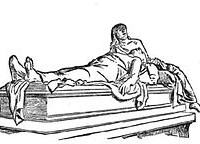 Tomb of Benito Juárez
Tomb of Benito Juárez
La Reforma represented the triumph of Mexico’s liberal, federalist, anti-clerical, and pro-capitalist forces over the conservative, centralist, corporatist, and theocratic elements that sought to reconstitute a locally run version of the old colonial system. It replaced a semi-feudal social system with a more market-driven one, but following Juárez’s death, the lack of adequate democratic and institutional stability soon led to a return to centralized autocracy and economic exploitation under the regime of Porfirio Díaz. The Porfiriato (Porfirist era), in turn, collapsed at the beginning of the Mexican Revolution.
21 March is the set day to commemorate Juárez. This date has become a national holiday in Mexico, which has continued to grow in acceptance within Mexican culture.
On 7 February 1866, Juárez was elected as a companion of the third class of the Pennsylvania Commandeers of the Military Order of the Loyal Legion of the United States (MOLLUS). While membership in MOLLUS was normally limited to Union officers who had served during the American Civil War and their descendants, members of the third Class were civilians who had made a significant contribution to the Union war effort. Juárez is one of the very few non-United States citizens to be a MOLLUS companion.
In Washington, D.C., there is a monument by Enrique Alciati, a gift to the US from Mexico.[11] Juárez has been mentioned or featured in television and film. Juarez is a 1939 American historical drama film directed by William Dieterle, and starring Paul Muni as Juárez. In January 1959, the episode entitled “The Desperadoes” of the ABC/Warner Brothers western television series, Sugarfoot, starring Will Hutchins in the title role, focuses upon an imaginary plot to assassinate Juárez. Set at a mission in South Texas, the episode features Anthony George as a Catholic priest, Father John, a friend of the series character Tom “Sugarfoot” Brewster. [12]
A great number of cities, towns, streets, institutions, and other things are named after Benito Juárez, including the former El Paso del Norte, now called Ciudad Juárez; see Juárez (disambiguation) for a partial list.
Mexico City International Airport is better known in Mexico by its first official name Aeropuerto Internacional Benito Juárez, or internationally often as Mexico City Juárez.
The Benito Juárez Partido in Buenos Aires Province and its seat are both named after Juárez, as a gesture of friendship between Argentina and Mexico.
The Italian dictator Benito Mussolini was named after Juárez.[13]
Benito Juárez Marg is a major road in South Delhi near Dhaula Kuan.
Benito Juárez is depicted on the 20-peso bill.
Benito Juárez (2002), a sculpture in Bryant Park in Manhattan, New York
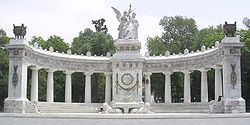
Juárez’s famous quotation continues to be well-remembered in Mexico: “Entre los individuos, como entre las naciones, el respeto al derecho ajeno es la paz”, meaning “Among individuals, as among nations, respect for the rights of others is peace.” The portion of this motto in bold is inscribed on the coat of arms of Oaxaca.
“Law has always been my shield and my sword” is a phrase often reproduced as decoration inside court and tribunals buildings.






